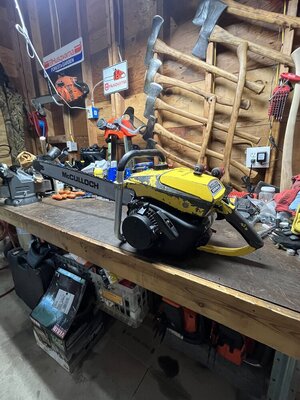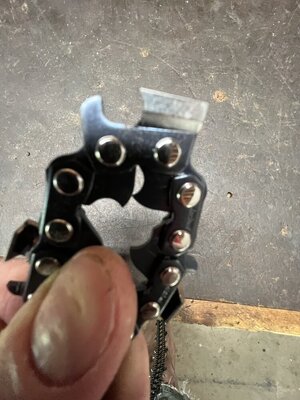BlueBeast
Active OPE Member
- Local time
- 8:42 AM
- User ID
- 27287
- Joined
- Aug 13, 2023
- Messages
- 14
- Reaction score
- 26
- Location
- Old Capital Ga.
So I went to the country today to wittle a oak into slabs and dust. Half way through the first rip decided the chain needed sharpening. I noticed the tops of the rakers were all shiny. The chain has never been sharpened, just 3 1/2 cuts on it. Is it common for the cutters to wear below the rakers before the first sharpening? Anyhow took the initiative to aggressively file them after sharpening the chain. A 52" skip tooth, in a mill. Things got dynamic, it went from a slow steady grind to one hungry monkey. A little jerky at first then it dug in and ate oak faster than any other time since I started milling. I always thought the rakers could wait til after a sharpening or two but man what a difference. By the way, has anyone ever been in the woods filing rakers and called up a turkey?







